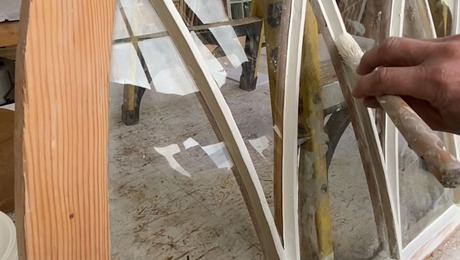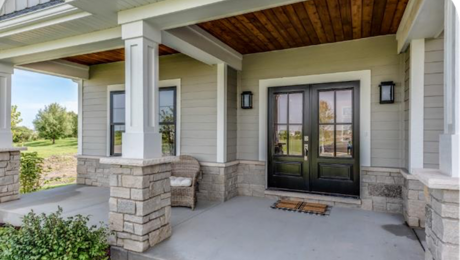Comparison of REM/Design models to post-construction performance
Hi,
It seems like REM/Design is one of the tools commonly used by some of the pros participating here. I’ve been working with it some and it seems like a good tool.
Judging from the complexity of building geometries, materials, and all the different factors that go into designing a building I’m figuring that it’s difficult, if not impossible, for any thermal modeling program to be completely accurate in predicting a home’s heating and cooling loads.
I’ve been using REM/Design two ways. One is as a means to compare the relative impact of different design approaches such as amount of window area, window U & SHGC values, performance differences between various SIP thicknesses and SIP materials, etc.
The other way I’m using it is to try to get a ballpark idea of what the heating needs will be for my planned home design. I believe the results REM/Design is producing are reasonably accurate but I have no way to be sure of this.
I was therefore wondering if anyone on this forum who has used REM/Design has ever done any follow up to see how close the thermal performance of the home(s) they’ve designed actually was when compared with the heating loads estimated during design phase modeling?
My real goal is to try to avoid significantly over or under sizing the heating system and to choose the right heating system design approach based on the results that the thermal modeling yields. I’m basically just trying to get a feel for what type of fudge factor would be prudent to apply to the results yielded by the modeling, assuming that I’ve entered all of the parameters correctly into the tool.
thanks.
GBA Detail Library
A collection of one thousand construction details organized by climate and house part









Replies
Jay,
In my experience, its been a couple of R/D versions since I ran the calcs myself, mainly because now days every house I design goes to a HERS rater and they get to do it in the after design stage and the after build when they perform their blower-door testing and final inspection. However, almost every time I ran R/D and the HERS rater runs the REM/Rate calcs, they are usually the same.
If you have two separate calcs and all inputs are the same, you should get the same results; otherwise there most be disconnect, miscalculation or a mistake somewhere.
Our Energy Star report on the Bryant Residence predicted usage of 24 MMbtu/yr for combined heating, cooling and water heating and 28.7 MMbtu/yr for all other usages actual usage was 45.46 MMbtu/yr for heating, cooling and hot water and 26.24 MMbtu/year for all other uses. (2.09 BTUh/sf or $57.64 per month) I'm pretty happy with the energy bills but a bit confused at the disparity between the prediction and the actual.
I think this is another good argument for an e-monitor as a part of the commissioning process, I'm guessing that if we could break down the activity of the pumps in the solar energy system we would be able to identify and act on the opportunity for improvement.
Michael,
You make a point about actual usage been so different than design usage in many cases. R/D and R/R are design calculations and finished house testing based on material, equipment inputs and a set number of occupants. Actuals are base on real use by maybe a different number of occupant, its activities and habits (good or bad).
Armando,
I do understand the occupant part of it but I keep seeing gains in more comprehensive commissioning as a big piece that many of us are missing. At least I have been missing some good tweaks by not data mining as thoroughly as I could have been. If I get a good HERS number and blower door test I think I've done my job well but I may missing out on simple adjustments that can make a significant difference when the envelope is very good.
I'm pretty sure Rem/Design and Rem/Rate are exactly the same, with the exception that Rem/Rate has a lot of reporting features that are necessary for HERS Raters.
In a recent study (http://www.advancedenergy.org/buildings/knowledge_library/FINAL_Paper_Houston_Energy_Efficiency_Study.pdf) of new Energy Star homes in Houston (all modeled with Rem/Rate), the average actual energy use for cooling and heating was within 3-4% of what was modeled, though there was a lot of variability.
In my opinion, Rem/Rate is weakest at modeling windows, especially solar gains through windows.
Hi John,
That's very useful info. Thank you. I did look at the report and you're correct. REM/Rate was indicated as being within 3% on cooling calculations and 4% on heating for a sample of 10,258 which is most definitely a statistically significant sample size.
Having worked in the SW industry for many years I'd be surprised if REM/Design and REM/Rate didn't utilize the same underlying calculation engine. It's difficult to support totally different products within the same market that essentially do the same type of thing. Given what's likely a relatively small customer base and low product price points it would be even tougher to do that.
This data definitely improves the level of confidence I have that the results I've been getting will be within a reasonable margin of error, say 10%. In fact I'd almost expect the eventual real usage for the house to be lower than REM/Design reports, at least initially, since we'll be using the house as a vacation home for quite a while before we eventually move there to retire. Even though I've modeled it, with respect to thermostat settings, for both full time occupancy (i.e. heating temp set at 68F) and part time occupancy (heating temp at 55F) there's no way to specify a percentage of occupancy. So I'd expect things like DHW usage (via an on demand system) and electric values (for appliances other than the refrigerator) to probably be higher than what we'll actually utilize.
I am curious about your statement wrt to how it handles windows and solar heat gain. Has your experience been that it over estimates this component or under estimates it?
We are designing our home to be oriented for maximizing passive solar gain. South facing windows account for 50% of the overall total window sf. The house's window to wall area ratio is 17% (a little high due to picture windows on the west gable end facing the mountains) and the window to wall ratio for the long south wall is 20%. Ratios of window sf to floor sf is 18% for above grade heated areas, and 14% for the entire home (the basement has south and west walk out walls with windows in them). The heated space will be separated from the basement by R-30 floors. The largest portion of the area exposed to passive solar will have VT green 3/8in gauged slate floors in it in order to absorb heat and re-radiate slowly during the night.
I'm still on the fence about whether to use double or triple pane windows. Results from REM/Design seem to indicate that the extra cost of the triple pane windows I'm considering (u=0.22, SHGC=0.39, ER=35), which run about 20-25% more, would have a 32+ year payback when compared against the double panes (u=0.31, SHGC=0.50, ER=30) which would be the alternative. Cost isn't the only consideration there. Aesthetic elements like Visual Transmittance are also part of the decision.
It would be useful for me to know which way, in your experience, REM/Design has erred with respect to solar gains through windows. If it tends to under report the solar gain then that would tend to make the triple pane option, with it's 16% higher ER rating than the double pane, look less cost effective.
thanks again
Jay,
I think you would be better suited to employ PHPP in your analysis. It has proven to be an extremely accurate tool, especially when modeling low energy buildings.
http://www.passivehouse.us/passiveHouse/DesignTools.html
http://www.passiv.de/07_eng/index_e.html
http://www.passivehouse-international.org/index.php?page_id=188&level1_id=78
Hi Skylar,
Have they changed the PHPP package recently? I had downloaded the PHPP2007 Demo last summer and it appeared to be an incredibly complicated spreadsheet that required entering a huge amount of information, even more than REM/Design. I found it pretty confusing in many spots trying to figure out what data got entered where and even what the data I should be entering was supposed to be.
If they've built a better, easier to use interface I might consider having a look at it again but my first impression of it was that it would take less time to build the house than to complete the PHPP spreadsheet :-)
thanks
Jay, It hasn't changed. It's still incredibly complicated, much more so than REM/Design. It's quite intimidating at first glance.
There are several areas where it really shines however, especially in window design. REM/design assumes every window has the same overall U value, based on the standard NFRC window unit, and doesn't let you evaluate or see the impact of individual window unit selection on your overall project.
That may or may not be important for what you are trying to accomplish.
Um, unless I'm misunderstanding your comment that's not true.
The version of REM/Design I'm using (12.9) allows you to specify each individual window and assign it to a particular wall. For each window you create you choose the type of it from a window type library. The window type library allows you to create your own window types. Each window type consists of specifying the U and SHGC values inclusive of frame effects which is how the window manufacturers list them in their technical specs as far as I understand.
So I've been able to mix window types not only on the whole house but even on any particular wall. Also, because it has the ability to do what it calls "2 Building Reports" which compare the performance of one building file against another I've been able to make different versions of the house (for example one with double panes and one with triple panes) and then compare the performance of the different versions head to head.
If I've misunderstood your comment please rephrase it.
thanks